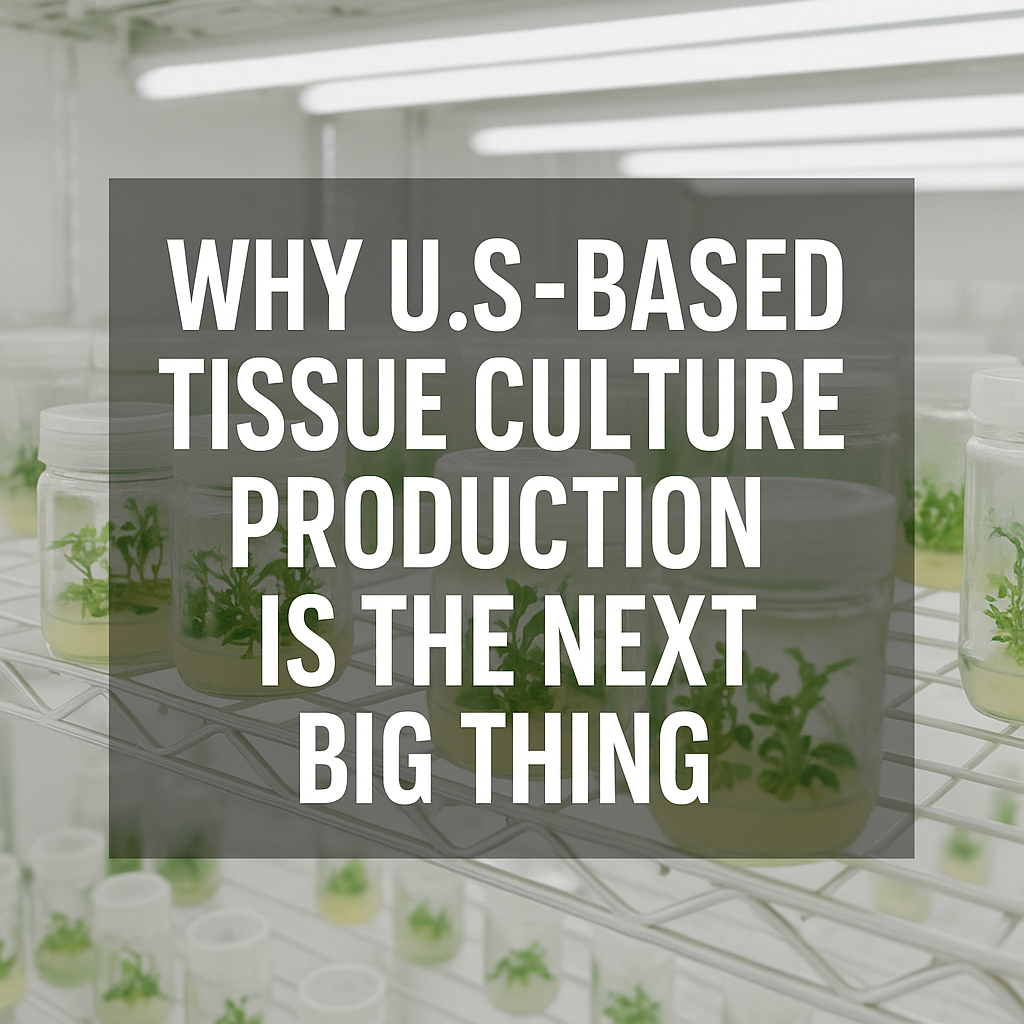
Why U.S.-Based Tissue Culture Production Is the Next Big Thing
Share
For decades, the majority of plant tissue culture production has taken place overseas in Asia, Central America, and Europe. While these labs have been crucial in supplying the global market, a new wave of demand, supply chain challenges, and consumer expectations are making U.S.-based production the next big thing in horticulture.
As someone who has worked in tissue culture for years, I see the shift happening now and the opportunities are enormous.
🌱 The Problem With Import Reliance
Most tissue culture plantlets currently available in the U.S. are imported. While this has helped keep costs low, it comes with significant drawbacks:
Shipping Stress: Thousands of miles in transit can weaken or kill fragile plantlets.
Delays: Customs inspections, port backlogs, and shipping disruptions create bottlenecks.
Phytosanitary Risks: Importing increases exposure to pests, pathogens, and contamination.
Unstable Supply: Global crises (pandemics, wars, fuel shortages) show how fragile international supply chains can be.
Collectors and growers end up paying more while waiting longer and sometimes losing plants along the way.
🌍 Why the U.S. Is Ready to Lead
1. Demand for Rare Tropicals Is Exploding
Houseplant collecting has gone from a niche hobby to a mainstream lifestyle trend. Rare aroids, variegated alocasias, and exotic philodendrons have booming demand — and the U.S. is one of the largest consumer markets in the world.
2. Faster Fulfillment & Better Survival Rates
Domestic labs can ship directly to customers within days instead of weeks. Reduced transit stress means higher survival rates, healthier plants, and happier customers.
3. Sustainability & Local Sourcing
More consumers want locally produced, eco-friendly products. U.S. production reduces the carbon footprint of air and sea freight while supporting domestic jobs.
4. Higher Standards & Innovation
American labs can leverage advanced automation, sterile facilities, and innovative techniques to stabilize rare cultivars faster. This also means more consistent quality compared to bulk overseas production.
5. Biosecurity & Plant Health
Producing plants within U.S. borders minimizes the risk of introducing invasive species, exotic pests, or diseases. That’s a win for growers and regulators alike.
💡 The Business Opportunity
For entrepreneurs and investors, U.S.-based tissue culture represents a massive growth market. Consider this:
The U.S. already spends billions annually on ornamental plants.
Rare tropicals command premium pricing — and buyers are willing to pay more for healthy, domestic stock.
Tissue culture labs can scale production of rare plants that are nearly impossible to source consistently through imports.
In short, the demand is here, the infrastructure is growing, and the timing has never been better.
🚀 What’s Next
We’re on the edge of a new era. Within the next five years, expect to see:
More boutique U.S. labs specializing in rare tropicals.
Partnerships between labs and collectors to develop exclusive cultivars.
Innovation in acclimation & packaging that makes plant delivery smoother than ever.
Final Thoughts
The next big leap in horticulture isn’t just about new plant varieties, it’s about where they’re grown. U.S.-based tissue culture production will reshape the market, delivering healthier plants, faster shipping, and greater sustainability for collectors and growers alike.
